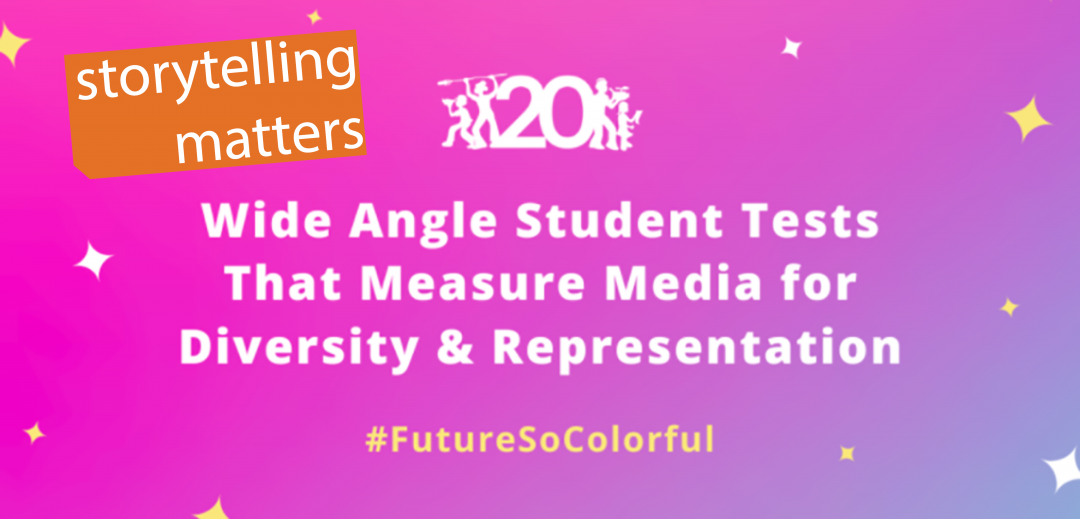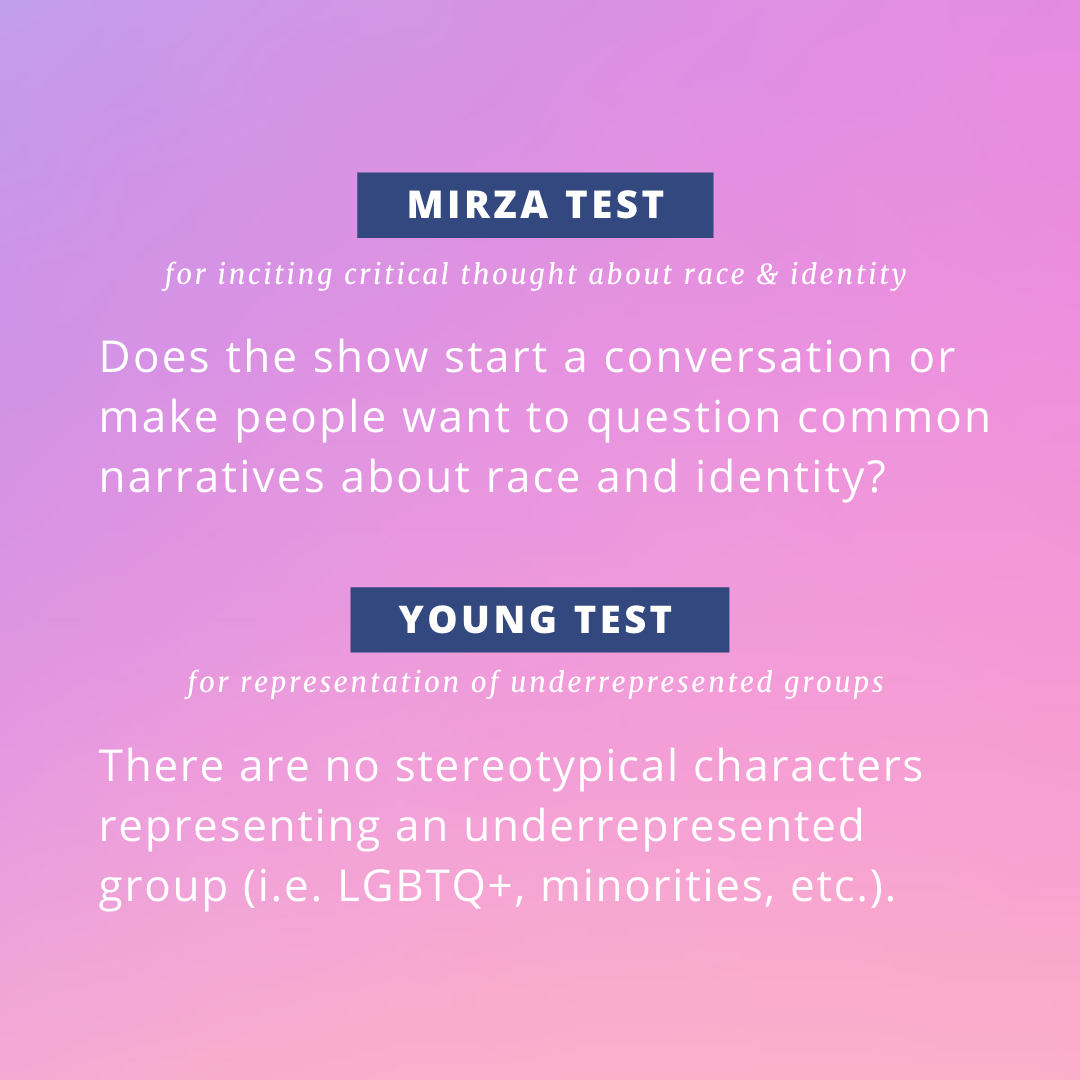
Read all the tests created by Wide Angle’s young people and learn more about why they created each one in our recent blog post.
reprinted from Wide Angle Youth Media | by Moira Fratantuono and Keiona Gorham
A Future So Colorful — coined by our student Shahmeer Mirza, this phrase embodies a world rich with diverse narratives woven into its social fabric, abundant with equitable opportunities for young creatives to pursue their passion. In the nonprofit sector, we dream of an egalitarian society, but how do we get there? How do we translate our desire for a better future into impactful diversity, equity and inclusion work?
The pursuit of becoming an antiracist organization is a long-term commitment that involves on-going energy, attention, and effort; particularly for organizations like Wide Angle Youth Media that are “white-led” serving a largely BIPOC community of students. (Notably, 80% of nonprofits across the country have white leadership — an ongoing issue within the sector that we want to name. Building Movement Project). It is due to this awareness of the need for further antiracist education, internal policies, and continued self-evaluation that we decided to deepen our work by addressing our language, specifically investigating our word selection and collective definitions.
As a youth media organization, we believe that the narratives our society upholds and which voices it amplifies matter. They shape our collective identity and give fundamental context to who we are. The words we use to tell those stories are just as important. In the nonprofit sector, we communicate with donors, foundations, government agencies, partner organizations and policy makers to paint a picture of our accomplishments, value proposition, and theory of change. Language is power — it can ignite crucial conversations within and about the sector, but only if we choose our words with intention.
This summer, we researched best practices for integrating racial justice into organizational communications, and were inspired by Prosper Strategies, Sum of Us’s A Progressive’s Style Guide, and the YWCA’s Our Shared Language Glossary. Our team conducted a social media and communications audit involving feedback from youth participants, current staff and its Marketing and Communications volunteer committee to determine how to strengthen constituent ownership of external communications (youth voice) and increase diversity, equity and inclusion in its communications strategy. Leadership recognized that a key step to move beyond internal circular conversations was to clarify our commonly used language, build mutual understanding and bridge the different lived experiences of staff, students, board members, and supporters. In the words of Baltimore Racial Justice Action (BRJA), “Shared definitions are crucial to productive conversations. Most of us have been taught ambiguous or even incorrect meanings of the terms we use to talk about inequity.”
“For me (a white woman), this year has been one of learning, unlearning, listening, critical self-reflection and reconciling difficult truths. Trainings I’ve attended, particularly those organized by Grow Charity Events, Nonprofit AF, and Community Centric Fundraising, have deepened my commitment to anti-racism and opened up new possibilities to understand and confront the complex relationships between wealth, race, historical oppression, white supremacy, access, and philanthropy. We are, individually and collectively, a work in progress, and we are dedicated to sowing the seeds of progress.”
–Moira Fratantuono, Development & Communications Director, Wide Angle Youth Media
Amplify and youth voice (concepts core to our mission), as well as critical concepts like power, allyship, white supremacy and antiracist required clarification to ensure that all stakeholders could embark on the journey of dismantling oppression and actualizing our mission together. Under the skillful guidance of Dena Robinson, J.D., (Radical Roots Consulting and former Wide Angle DEI Facilitator), this fall, staff began to identify, deconstruct and define its shared language. In the coming weeks, we will refine and publish a glossary on our website. The final glossary will be a living document, revisited and edited as needed. With this tool, we have the opportunity to own our narrative, and also educate others on how damaging, coded phrases like youth at risk — a term still frequently used within philanthropy (and society at large) — uphold systemic oppressions, while also offering alternatives, such as youth from historically oppressed communities.
Our current work is by no means the end-all. We are clear in the fact that we have a long way to go in dismantling systemic and structural racism as an organization but also celebrate how far we have come as well. Dena’s leadership and facilitation in this work was critical in highlighting the areas of opportunity for continued organizational and leadership development in the space of racial equity.”
– Keiona Gorham, Program Director, Wide Angle Youth Media
We hope that this step, combined with a wider range of equity initiatives (increasing transparency with staff and stakeholders, establishing a COVID-19 Flex Policy, expanding part-time staff benefits, management training with Ted Capshaw & Associates to create better HR orientation and clarify hiring practices, developing a teleworking work from home stipend for all staff, expanding a youth Emergency Fund, creating racial justice resources on our website, and taking steps towards pay equity), will help us continue to make progress towards that Future So Colorful. As we look to a new year, we ask, “What words do you want your organization to define for itself? Would embarking on a similar effort in your organization take us one step closer towards the new tomorrow that our students envision?”
Read all the tests created by Wide Angle’s young people and learn more about why they created each one in our recent blog post.

